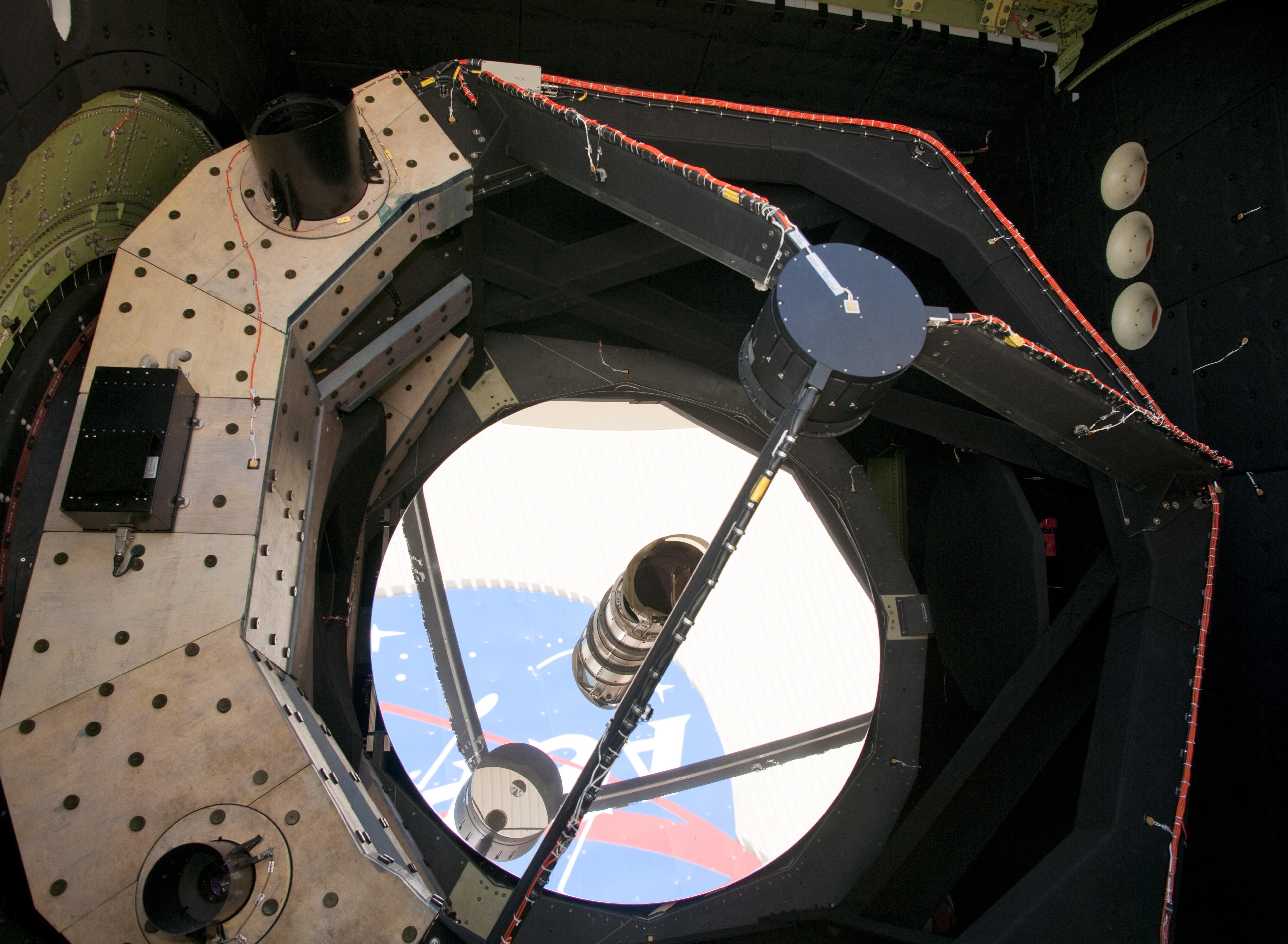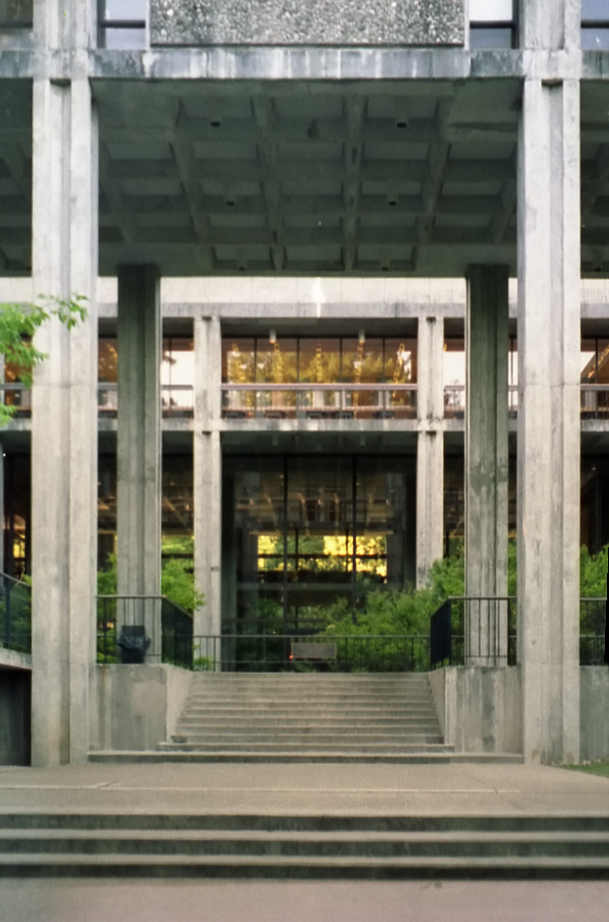|
Anna L. Nickel Telescope
The Anna L. Nickel telescope is a 1-meter reflecting telescope located at Lick Observatory in the U.S. state of California. The smaller dome on the main building at Lick had originally held the secondhand 12-inch Clark refracting telescope, the first telescope to be used at Lick. In 1979 it was replaced with the Anna L. Nickel telescope, a 1-meter reflecting telescope. The telescope is named for Anna L. Nickel, a San Francisco native who donated $50,000, a large portion of her estate, to the Observatory. The Nickel telescope was built entirely by UC Santa Cruz personnel and utilized many spare parts, including a replacement mirror for the Crossley Reflector. It eased demand for time on the 120-inch C. Donald Shane telescope The C. Donald Shane telescope is a 120-inch (3.05-meter) reflecting telescope located at the Lick Observatory in San Jose, California. It was named after astronomer C. Donald Shane in 1978, who led the effort to acquire the necessary funds from t . ... [...More Info...] [...Related Items...] OR: [Wikipedia] [Google] [Baidu] |
Reflecting Telescope
A reflecting telescope (also called a reflector) is a telescope that uses a single or a combination of curved mirrors that reflect light and form an image. The reflecting telescope was invented in the 17th century by Isaac Newton as an alternative to the refracting telescope which, at that time, was a design that suffered from severe chromatic aberration. Although reflecting telescopes produce other types of optical aberrations, it is a design that allows for very large diameter objectives. Almost all of the major telescopes used in astronomy research are reflectors. Many variant forms are in use and some employ extra optical elements to improve image quality or place the image in a mechanically advantageous position. Since reflecting telescopes use mirrors, the design is sometimes referred to as a catoptrics, catoptric telescope. From the time of Newton to the 1800s, the mirror itself was made of metal usually speculum metal. This type included Newton's first designs and eve ... [...More Info...] [...Related Items...] OR: [Wikipedia] [Google] [Baidu] |
Lick Observatory
The Lick Observatory is an astronomical observatory owned and operated by the University of California. It is on the summit of Mount Hamilton, in the Diablo Range just east of San Jose, California, United States. The observatory is managed by the University of California Observatories, with headquarters on the University of California, Santa Cruz campus, where its scientific staff moved in the mid-1960s. It is named after James Lick. The first new moon of Jupiter to be identified since the time of Galileo was discovered at this observatory; Amalthea, the planet's fifth moon, was discovered at this observatory in 1892. Early history Lick Observatory is the world's first permanently occupied mountain-top observatory. The observatory, in a Classical Revival style structure, was constructed between 1876 and 1887, from a bequest from James Lick of $700,000, . Lick, originally a carpenter and piano maker, had arrived from Peru in San Francisco, California, in late 1847; after ac ... [...More Info...] [...Related Items...] OR: [Wikipedia] [Google] [Baidu] |
California
California is a U.S. state, state in the Western United States, located along the West Coast of the United States, Pacific Coast. With nearly 39.2million residents across a total area of approximately , it is the List of states and territories of the United States by population, most populous U.S. state and the List of U.S. states and territories by area, 3rd largest by area. It is also the most populated Administrative division, subnational entity in North America and the 34th most populous in the world. The Greater Los Angeles area and the San Francisco Bay Area are the nation's second and fifth most populous Statistical area (United States), urban regions respectively, with the former having more than 18.7million residents and the latter having over 9.6million. Sacramento, California, Sacramento is the state's capital, while Los Angeles is the List of largest California cities by population, most populous city in the state and the List of United States cities by population, ... [...More Info...] [...Related Items...] OR: [Wikipedia] [Google] [Baidu] |
Refracting Telescope
A refracting telescope (also called a refractor) is a type of optical telescope that uses a lens (optics), lens as its objective (optics), objective to form an image (also referred to a dioptrics, dioptric telescope). The refracting telescope design was originally used in spyglasses and astronomy, astronomical telescopes but is also used for long-focus lens, long-focus camera lenses. Although large refracting telescopes were very popular in the second half of the 19th century, for most research purposes, the refracting telescope has been superseded by the reflecting telescope, which allows larger apertures. A refractor's magnification is calculated by dividing the focal length of the objective lens by that of the eyepiece. Refracting telescopes typically have a lens at the front, then a optical train, long tube, then an eyepiece or instrumentation at the rear, where the telescope view comes to focus. Originally, telescopes had an objective of one element, but a century later, tw ... [...More Info...] [...Related Items...] OR: [Wikipedia] [Google] [Baidu] |
UC Santa Cruz
The University of California, Santa Cruz (UC Santa Cruz or UCSC) is a public land-grant research university in Santa Cruz, California. It is one of the ten campuses in the University of California system. Located on Monterey Bay, on the edge of the coastal community of Santa Cruz, the campus lies on of rolling, forested hills overlooking the Pacific Ocean. Founded in 1965, UC Santa Cruz began with the intention to showcase progressive, cross-disciplinary undergraduate education, innovative teaching methods and contemporary architecture. The residential college system consists of ten small colleges that were established as a variation of the Oxbridge collegiate university system. Among the Faculty is 1 Nobel Prize Laureate, 1 Breakthrough Prize in Life Sciences recipient, 12 members from the National Academy of Sciences, 28 members of the American Academy of Arts and Sciences, and 40 members of the American Association for the Advancement of Science. Eight UC Santa Cruz alumni ... [...More Info...] [...Related Items...] OR: [Wikipedia] [Google] [Baidu] |
Crossley Reflector
The Crossley telescope is a reflecting telescope located at Lick Observatory in the U.S. state of California. It was used between 1895 to 2010, and was donated to the observatory by Edward Crossley, its namesake. It was the largest glass reflecting telescope in the United States for several years after its recommissioning in California. Lick Director, James Edward Keeler, remarked of the Crossley in 1900, "... by far the most effective instrument in the Observatory for certain class of astronomical work." History Given to the Lick Observatory in 1895 by British politician Edward Crossley, it was rebuilt from the ground up as it was on a very flimsy mounting. It was last used in 2010 in the search for extra-solar planets but has been taken out of service due to budget cuts. The mirror, and some of the initial mounts, came from the 36-inch reflector originally mounted in Andrew Ainslie Common's backyard Ealing observatory. He had used it from 1879 to 1886 to prove the concept o ... [...More Info...] [...Related Items...] OR: [Wikipedia] [Google] [Baidu] |
List Of Largest Optical Telescopes In The 20th Century
The following is a list of the largest optical telescopes in the 20th century, paying special attention to the diameter of the mirror or lens of the telescope's objective, or aperture. Aperture rank currently goes approximately by the usable physical aperture size and not by aperture synthesis, although interferometers attained some of the highest angular resolutions at visible and infrared wavelengths compared to traditional telescopes. Diverging methods of construction and use for reflecting telescopes in that area make comparing synthesized aperture irregular. For instance, Keck I or II alone has less angular resolution than the Keck Interferometer (Keck I & II together), however, the Keck Interferometer is used for a much narrower range of type of observations. Ultimately, a valid comparison between two telescopes must take into consideration more specifications, when a general measurement becomes obtuse. Aperture of the primary mirror alone can be poor measure of a reflective ... [...More Info...] [...Related Items...] OR: [Wikipedia] [Google] [Baidu] |
List Of Astronomical Observatories
This is a list of astronomical observatories ordered by name, along with initial dates of operation (where an accurate date is available) and location. The list also includes a final year of operation for many observatories that are no longer in operation. While other sciences, such as volcanology and meteorology, also use facilities called observatories for research and observations, this list is limited to observatories that are used to observe celestial objects. Astronomical observatories are mainly divided into four categories: space-based, airborne, ground-based, and underground-based. Many modern telescopes and observatories are located in space to observe astronomical objects in wavelengths of the electromagnetic spectrum that cannot penetrate the Earth's atmosphere (such as ultraviolet radiation, X-rays, and gamma rays) and are thus impossible to observe using ground-based telescopes. Being above the atmosphere, these space observatories can also avoid the effects of atmo ... [...More Info...] [...Related Items...] OR: [Wikipedia] [Google] [Baidu] |
Optical Telescopes
An optical telescope is a telescope that gathers and focuses light mainly from the visible part of the electromagnetic spectrum, to create a magnified image for direct visual inspection, to make a photograph, or to collect data through electronic image sensors. There are three primary types of optical telescope: * Refracting telescopes, which use lenses and less commonly also prisms (dioptrics) * Reflecting telescopes, which use mirrors ( catoptrics) * Catadioptric telescopes, which combine lenses and mirrors An optical telescope's ability to resolve small details is directly related to the diameter (or aperture) of its objective (the primary lens or mirror that collects and focuses the light), and its light-gathering power is related to the area of the objective. The larger the objective, the more light the telescope collects and the finer detail it resolves. People use optical telescopes (including monoculars and binoculars) for outdoor activities such as observation ... [...More Info...] [...Related Items...] OR: [Wikipedia] [Google] [Baidu] |



